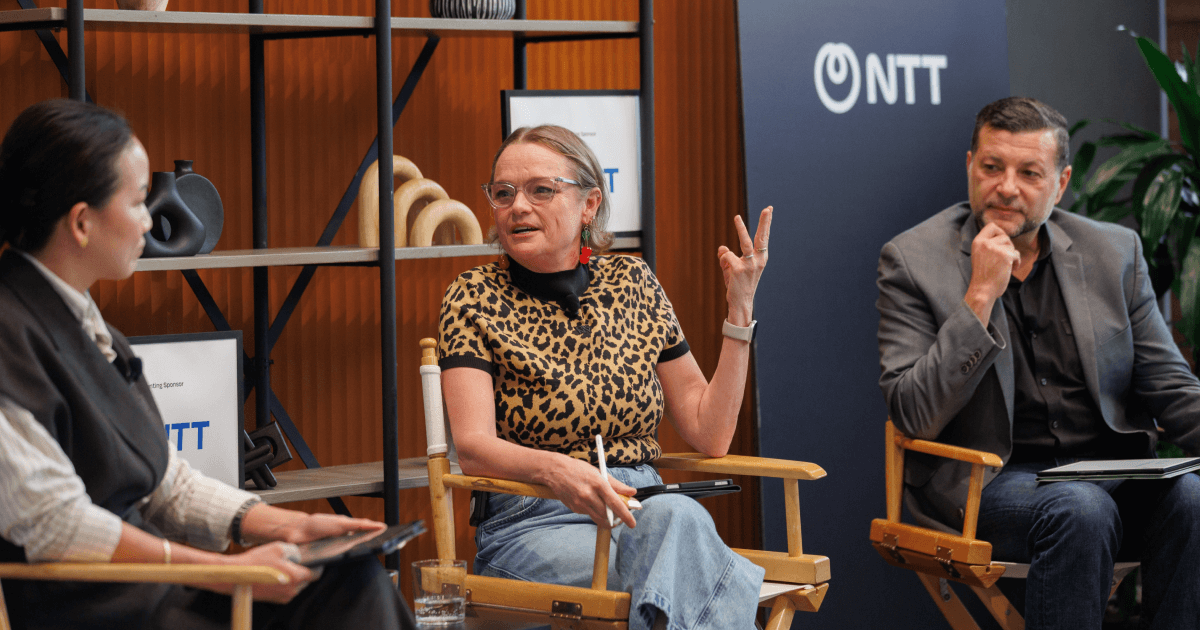Design with everyone in mind: The key to better digital products in the public sector


Digital products come with tight deadlines because competition and the pressure to create impact are both incredibly intense. So it makes perfect sense to skip over accessibility requirements and worry about them at the very end, right? While it may seem this way, it is actually more cost- and time-effective to take an accessible-first approach. You’ll not only meet guidelines, but also delight users with exceptional user experiences.
Accessibility should never be an afterthought, so why do we treat it as such? Designing products this way not only excludes a significant portion of the population, but also results in retrofitting, which is expensive — and the fines and fees due to lack of compliance are even more expensive. We’re talking millions of dollars.
The best way to avoid this? Bake accessibility into your projects from the very beginning. Let’s explore what this looks like.
Designing with accessibility in mind
You cannot develop constituent-focused products and services without designing them around the needs of the people, and you can’t fulfill your duty of serving the public if you are overlooking those with disabilities. That’s why the planning phase for every public sector digital project should include in-depth audience research. By having conversations with various audience groups, conducting surveys, and diving into your data, you can gain a more comprehensive perspective on the problems your product needs to solve.
This is also the ideal time to get up to date with any regulatory requirements currently in place or on the horizon. The regulatory landscape is ever-evolving, with certain federal regulations already in place and several slated to impact the state and local levels in the near future. If you know what’s coming, why wait for it to arrive? Better to build for the new standards now to save the headache later.
But simply adhering to standards isn’t good enough. Taking an accessibility-first approach makes it possible to elevate the experiences you deliver for all of your users, not just those with disabilities. It forces you to be more thoughtful and intentional about the decisions you’re making, the features you're introducing, and how your entire UX flows. It’s the guiding light of your project, not a box to tick at the end.
Just like we do design research and iterative development for our general audience, we need to do that for the accessible needs audience. Incorporating them into the initial research instead of as a separate population is what makes a project accessible-first. When you’re ready for testing, gather feedback from the disabled community if possible. Listen, learn, and iterate. It may seem like you’re just adding time to an already-tight project but it’s likely less than the time you would need to devote to going back in later and fixing what’s already built. Even more importantly, it gives you an overall better product in the end.
When you work in accessibility throughout the project, you’re able to launch with a product that is well thought out, thorough, and usable by a much wider audience. You’ve saved yourself the hassle of having to backtrack and can instead focus on optimizing and updating as needed.
What this looks like in practice
We’ve seen firsthand how effective this can be. One of the US’ largest electric parent companies was under heavy pressure to modernize six websites to maintain compliance, avoid hefty financial penalties, and eliminate a variety of security risks. However, legacy issues made it impossible to lift and shift. With such a tight timeline to modernize 18,000+ web pages, our team had no choice but to take an accessible- and responsive-first approach so every user, on every device could have the ideal experience on launch day.
We decomposed the existing content into a number of content schemas that would allow for composition and reuse, then paired it with a SaaS-based headless CMS. This composable content structure makes it easy to publish content on any digital channel — and will adapt to any future channels that are created. Design systems and component libraries are key parts of this project’s success. They not only allow us to create and validate accessible needs at an atomic level, but also make it easy to manage brand integrity and facilitate changes to design and function.
The new sites aren’t just accessible; they exceed accessibility regulations to offer a truly inclusive experience and keep the company ahead of the curve for future regulations. The compositional nature of the content allows it to easily fit into accessibility guidelines, and the content can easily be used in accessible-specific channels if necessary.
Imagine, though, if we had made accessibility an afterthought. After doing all this work, we would have had to double back and make sure we were in compliance. There certainly wouldn’t have been time for any accessibility upgrades — the extra regulatory work alone would have put us in serious jeopardy of missing our deadline.
Accessibility done at the 11th hour usually never meets the users’ needs. Because it is an afterthought, the work is typically done by people with no familiarity or experience as accessibility users. In almost every case, the end product does what it’s supposed to — but just barely. There’s certainly nothing memorable, exceptional, or particularly inclusive about it.
By making accessibility optimizations a foundational part of the product development process, the company was able to meet their deadlines and launch with an overall better web experience. That’s because designing for those with accessible needs in mind leads to more thoughtful and intuitive experiences for all users.
To learn more about how public sector organizations like yours can not only navigate digital accessibility regulatory requirements but also go beyond usability and live out their duty to provide engaging, equitable experiences for all users across every touchpoint, check out our on-demand webinar.



